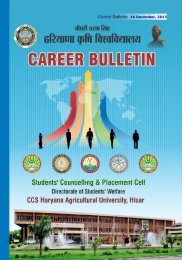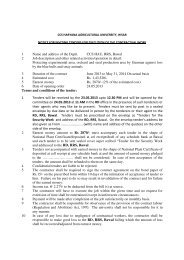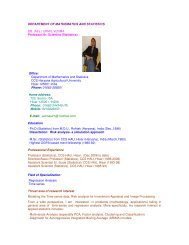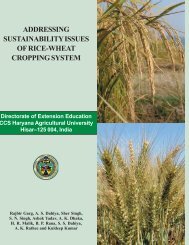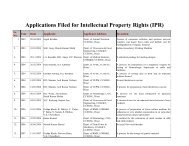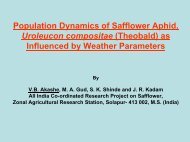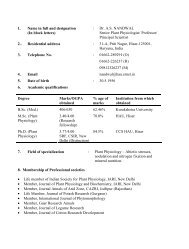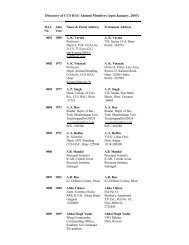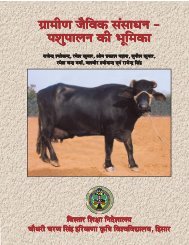Foreword - CCS HAU, Hisar
Foreword - CCS HAU, Hisar
Foreword - CCS HAU, Hisar
You also want an ePaper? Increase the reach of your titles
YUMPU automatically turns print PDFs into web optimized ePapers that Google loves.
A SYSTEMATIC APPROACH TO DIAGNOSING<br />
PLANT DAMAGE<br />
Ram Singh<br />
Department of Entomology,<br />
<strong>CCS</strong> Haryana Agricultural University, <strong>Hisar</strong><br />
Precise diagnosis must be made before corrective action can be taken. Probability of<br />
correct diagnosis based on only one or two clues or symptoms is low. Similarities of symptoms<br />
produced on the same plant by completely different factors frequently make the use of<br />
symptoms alone inadequate.<br />
Factors causing plant damage can be grouped into two major categories :<br />
Living factors: living organisms such as pathogens (fungi, bacteria, viruses, nematodes)<br />
and pests (insects, mites, mollusks, rodents...).<br />
Nonliving factors: mechanical factors (i.e. breakage, abrasions, etc); physical,<br />
environmental factors (extremes of temperature, light, moisture, oxygen, lightning); and,<br />
chemical factors (chemical phytotoxicities, nutritional disorders, etc).<br />
I. DEFINE THE PROBLEM<br />
A. Plant identification and characteristics. Establish what the “normal” plant would<br />
look like at this time of year. Describe the “abnormality”: Symptoms & Signs.<br />
B. Examine the entire plant and its community. Determine the primary problem and<br />
part of the plant where initial damage occurred.<br />
II. LOOK FOR PATTERNS: On more than one plant? On more than one plant species?<br />
A. Non-uniform damage pattern-(scattered damage on one or only a few plant species)<br />
is indicative of living factors (pathogens, insects, etc.).<br />
B. Uniform damage pattern over a large area (i.e. damage patterns on several plant<br />
species) and uniform pattern on the individual plant and plant parts indicates nonliving<br />
factors (mechanical, physical, or chemical factors).<br />
III. DELINEATE TIME-DEVELOPMENT OF DAMAGE PATTERN :<br />
A. Progressive spread of the damage on a plant, onto other plants, or over an area with<br />
time indicates damage caused by living organisms.<br />
B. Damage occurs, does not spread to other plants or parts’’ of the affected plant.’<br />
Clear line of demarcation between damaged and undamaged tissues. These clues<br />
indicate nonliving damaging factors.<br />
IV. DETERMINE CAUSES OF THE PLANT DAMAGE :<br />
A. Distinguish among living factors<br />
1. Symptoms and signs of PATHOGENS.<br />
2. Symptoms and signs of INSECTS, MITES, and other ANIMALS.<br />
B. Distinguish among nonliving factors<br />
1. MECHANICAL FACTORS<br />
14



